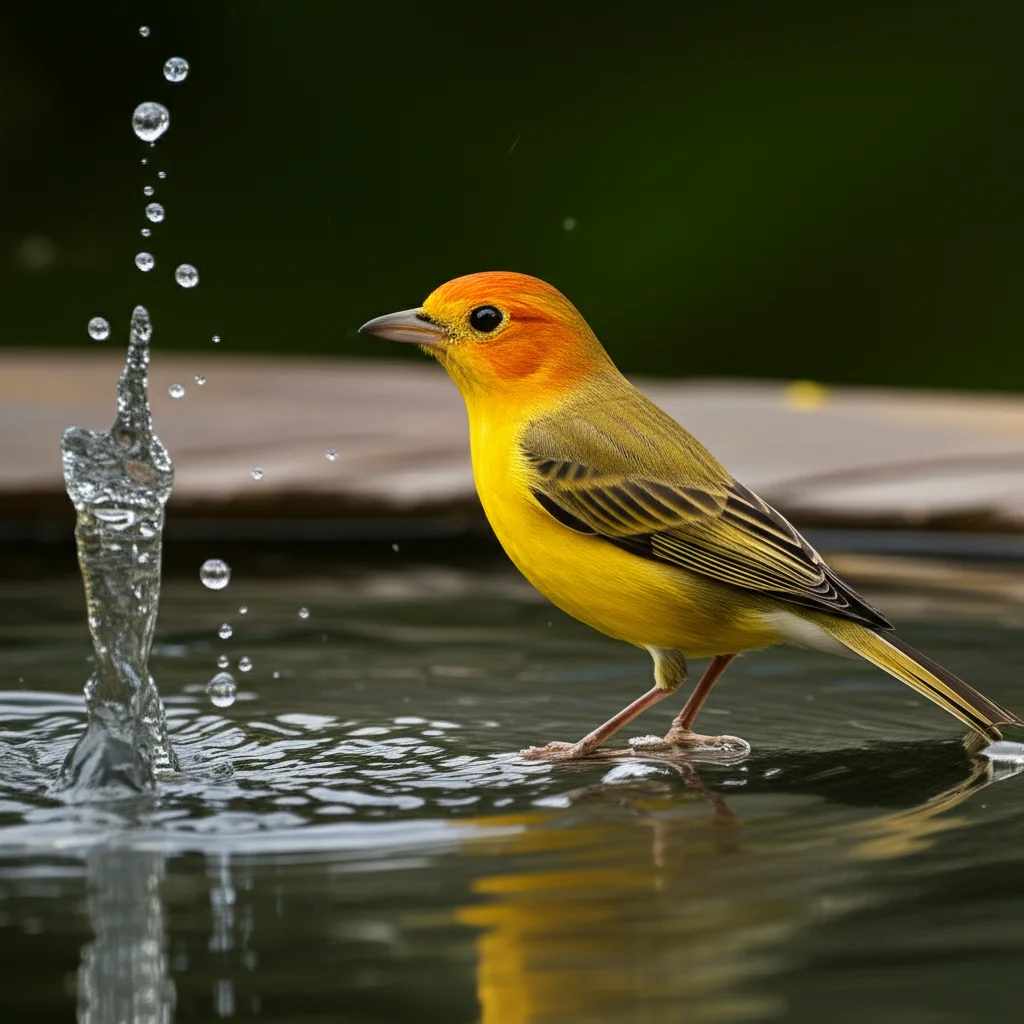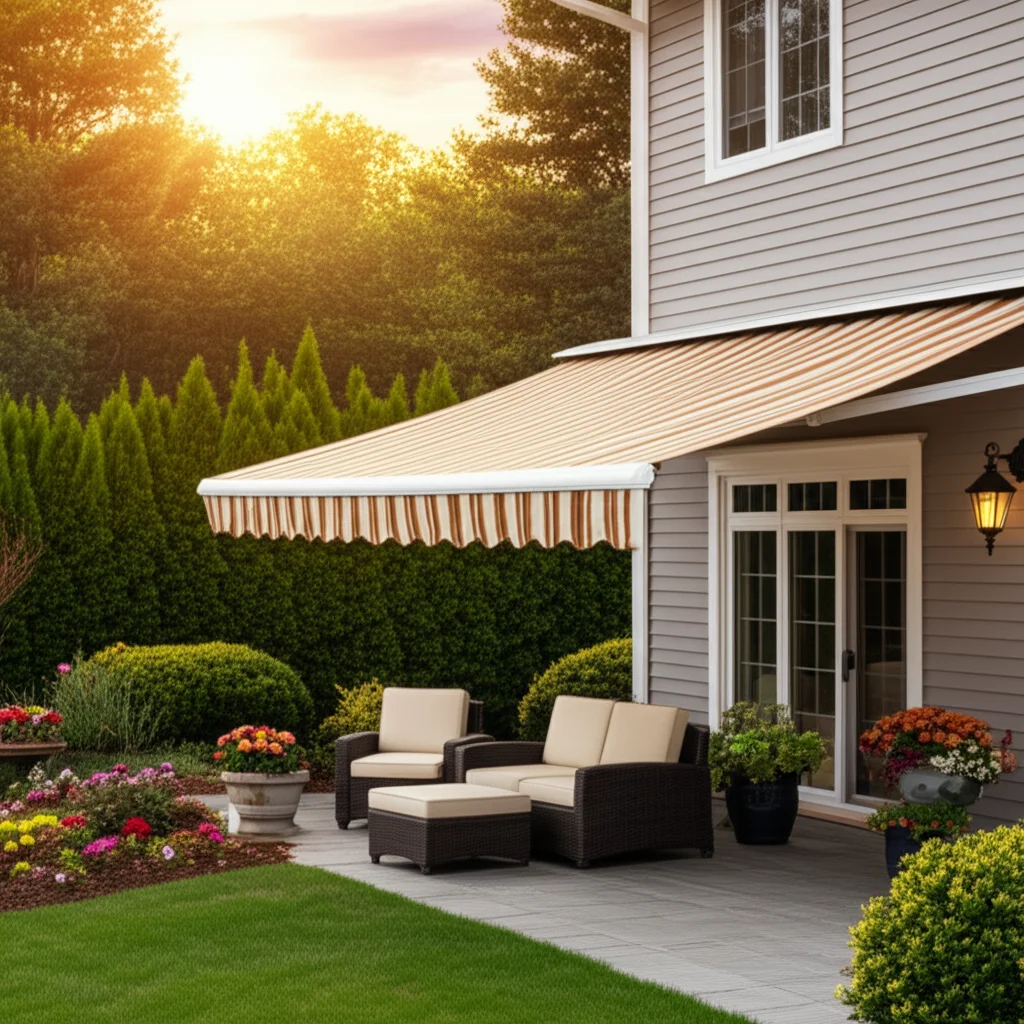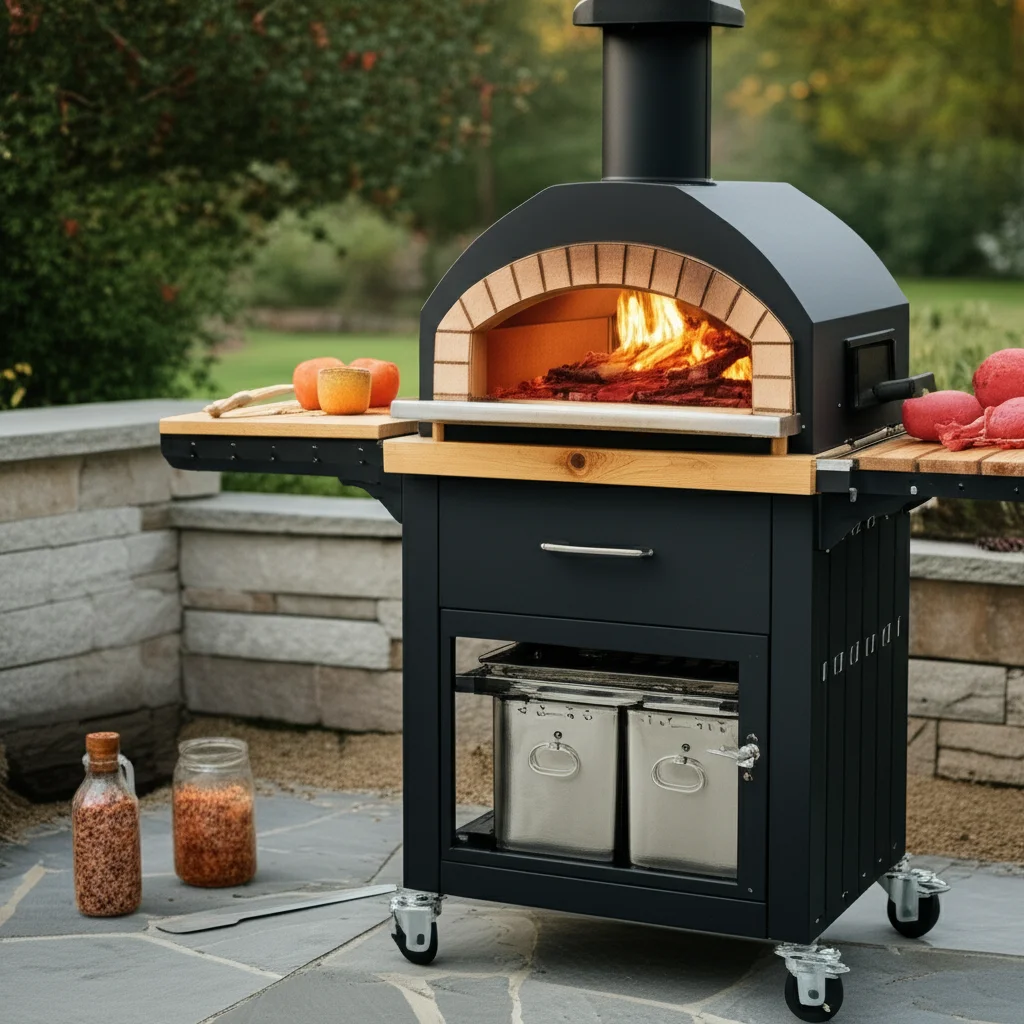· Todd Martin · Outdoor Living · 13 min read
How To Keep Bird Bath Water Clean

Keeping Your Bird Bath Water Clean: A Comprehensive Guide
A bird bath brings life and beauty to any garden. It offers a vital water source for birds to drink and preen. However, a dirty bird bath can quickly become a health hazard. Keeping your bird bath water clean is essential for the health of your feathered visitors. It also maintains a beautiful feature in your yard. I want to share my best tips to help you provide a safe, inviting spot for local wildlife. This guide covers everything from daily upkeep to deep cleaning methods.
Takeaway
Maintaining a clean bird bath involves regular effort. You can ensure fresh water for birds by following these simple steps:
- Daily Action: Empty and rinse the bird bath daily.
- Weekly Cleaning: Scrub the bath thoroughly with a brush and natural cleaners.
- Algae Control: Use circulation or copper to prevent algae buildup.
- Location Choice: Place the bath in partial shade to slow algae growth.
- Material Matters: Select a bird bath material easy to clean.
To keep bird bath water clean, consistently empty, scrub, and refill it every one to two days. Use a stiff brush and a natural cleaning solution like vinegar or a diluted bleach mixture, followed by a thorough rinse, to remove algae and harmful bacteria.
The Importance of Clean Bird Bath Water
Birds need fresh water for many reasons. They drink it to stay hydrated. Birds also use water for preening their feathers, which helps them fly and stay warm. A clean bird bath supports these vital activities. When water is dirty, it can cause problems.
Dirty water can harbor harmful bacteria and fungi. These can make birds sick. Algae buildup makes the water unappealing and slippery. It can also create an environment for mosquito larvae to grow. Mosquitoes spread diseases like West Nile Virus. Providing a clean water source protects local bird populations. It also makes your garden a healthier place for everyone. A sparkling bird bath enhances the beauty of your outdoor space.
Daily Maintenance for Sparkling Water
Daily care is the first step to keeping your bird bath water clean. This simple routine prevents grime from building up. I always make sure to check my bird bath every morning. This helps me catch any issues early.
Start by emptying all the old water. You can just tip the bath over. Next, give the basin a quick rinse with a hose. Use a stiff-bristled brush to remove any loose debris or slime. I find a dedicated brush makes this task simple. Refill the bath with fresh, clean water. This daily refresh takes only a few minutes. It makes a big difference in water quality. This regular habit will significantly reduce the need for deep cleaning. It ensures birds always have access to safe drinking water.
Deep Cleaning Your Bird Bath: Step-by-Step
Even with daily care, your bird bath needs a deeper clean regularly. I recommend a thorough scrubbing at least once a week. If you notice a lot of algae or cloudy water, clean it more often. This deep cleaning gets rid of stubborn grime and germs. It helps keep the water genuinely safe.
First, completely empty the bird bath. Remove any large pieces of debris. Use a sturdy brush to scrub the entire surface. Pay close attention to textured areas where grime can hide. If your bird bath is made of cement, this thorough cleaning is especially important to prevent porous surfaces from harboring bacteria. For detailed instructions, you might find this guide helpful: how to clean cement bird bath. After scrubbing, rinse the bath thoroughly with clean water.
Using Vinegar for Cleaning
Vinegar is a natural and safe cleaner for bird baths. It works well on mild algae and mineral deposits. I often use a vinegar solution for my weekly cleaning. Mix equal parts white vinegar and water in a spray bottle. Spray the entire surface of the bird bath. Let it sit for 10-15 minutes. Then, scrub vigorously with your brush. The acid in the vinegar helps break down the grime. Rinse the bird bath completely with fresh water several times. You want to ensure no vinegar smell remains.
Cleaning with Baking Soda
Baking soda is another excellent natural cleaning agent. It is mildly abrasive and helps remove stubborn buildup. I use baking soda for extra scrubbing power. Sprinkle a generous amount of baking soda onto the damp surface of the bird bath. Use your brush to scrub it into a paste. The baking soda will help lift and remove tough spots. It is especially effective on dried bird droppings. For more tips on using this versatile product, see how to clean bird bath with baking soda. Rinse the bath thoroughly until all residue is gone.
Bleach Solution for Tough Stains
Sometimes, you encounter very tough stains or persistent algae. A diluted bleach solution can be necessary. Use bleach sparingly and with great caution. Mix one part bleach with nine parts water (a 10% bleach solution). Apply this mixture to the bird bath surface. Let it sit for no more than 10 minutes. Scrub thoroughly with a brush. It is critical to rinse the bird bath completely afterward. Rinse multiple times. Let the bird bath air dry in the sun for several hours before refilling. This allows any residual chlorine to dissipate. This step is vital for bird safety.
Preventing Algae and Slime Buildup
Preventing algae and slime is easier than removing it. Several strategies can help you keep your bird bath cleaner for longer. I have found these methods very effective. They reduce the frequency of intense scrubbing.
One simple way to reduce algae is by choosing the right location. Place your bird bath in a shaded area. Direct sunlight encourages algae growth. If a shaded spot is not possible, daily emptying and rinsing become even more important. Circulation also helps a lot. Moving water is less likely to grow algae. Consider adding a bird bath wiggler. This small device creates ripples on the water surface. A dripper attachment also works well. These items also attract more birds to your bath. They love the sound and movement of fresh water.
Another natural deterrent is copper. Placing a few copper pennies (pre-1982, when they were mostly copper) or a small copper pipe in the bath can inhibit algae. Copper releases ions that slow algae growth. Ensure the copper is clean and free of coatings. You might also consider a small amount of barley straw. Special barley straw extracts are available for ponds and water features. Use these products according to instructions, as too much can harm birds. Keeping water clean from debris, like falling leaves or bird droppings, is also key. Bird droppings contribute significantly to algae growth. Regularly remove them to maintain water quality, just as you would need to clean bird poop from other surfaces like concrete or a deck. For more general water cleanliness tips, explore methods on how to keep pool water clean.
Choosing the Right Bird Bath Material for Easier Cleaning
The material of your bird bath impacts how easy it is to keep clean. Different materials have different textures and porosities. I learned this through trial and error. Selecting a suitable material can save you a lot of effort.
Concrete bird baths are very popular. They are durable and look natural. However, concrete is porous. This means it can absorb water and nutrients. This porosity can make it more prone to algae and mineral stains. Regular scrubbing and sealing can help. Remember to check out tips on how to clean cement bird bath if you have one.
Ceramic or glazed bird baths have a smooth, non-porous surface. This makes them much easier to clean. Algae and grime struggle to adhere to these surfaces. They often come in beautiful colors and designs. The downside is they can be fragile. Freezing temperatures can cause them to crack.
Plastic or resin bird baths are lightweight and inexpensive. They are also easy to clean due to their smooth surfaces. They are durable against cracking from cold. However, plastic can become brittle over time from UV exposure. Some plastic baths can also scratch easily, creating rough spots for algae to cling.
Metal bird baths like those made of cast iron or copper are very sturdy. Copper naturally resists algae. Cast iron can rust if not properly maintained and sealed. Stainless steel is easy to clean and very durable. However, metal baths can heat up quickly in direct sun. This can make the water too warm for birds.
Glass bird baths are beautiful and offer a clear view of the water. They are very smooth and easy to wipe clean. Like ceramic, they are fragile and susceptible to cracking in freezing weather. Consider where you live and the weather conditions before choosing a glass bath.
Overall, materials with smooth, non-porous surfaces like glazed ceramic, resin, or stainless steel are generally the easiest to keep clean. Regardless of material, consistent cleaning remains the most important factor.
Addressing Common Bird Bath Challenges
Even with the best intentions, you might face some common bird bath issues. Knowing how to handle them keeps your bird bath functional and clean. I have encountered several of these over the years.
One major challenge is mosquito larvae. Mosquitoes lay eggs in standing water. These eggs hatch into tiny “wigglers.” The best defense is daily emptying and refilling. If you empty the bath every day, the larvae do not have enough time to develop. A water wiggler or bubbler also disrupts their life cycle. The movement prevents them from getting enough oxygen. Remember, preventing mosquitoes is vital for public health.
Hard water stains are another common problem. These mineral deposits leave white, crusty rings. They can be tough to remove. White vinegar is excellent for breaking down these stains. Apply undiluted vinegar to the affected areas. Let it sit for 30 minutes to an hour. Then, scrub vigorously with a stiff brush. For stubborn stains, repeat the process. You can also use a non-toxic commercial descaler. If you frequently battle hard water, you might find more tips on how to clean hard water stain.
Bird droppings are unavoidable. Birds use the bath and will leave droppings. These droppings introduce bacteria and nutrients that fuel algae growth. Frequent scrubbing is the best solution. If you notice fresh droppings, try to remove them immediately. This prevents them from drying and sticking. For advice on cleaning bird poop from various surfaces, you can refer to articles like how to clean bird poop.
Finally, winter care is crucial in colder climates. Freezing water expands. This can crack and destroy ceramic, concrete, and glass bird baths. Either bring the bird bath indoors during freezing weather. Or, use a bird bath heater. Heaters keep a small section of water liquid. This provides a water source for winter birds. Always follow manufacturer instructions for heaters.
Advanced Tips and Tools for Continuous Cleanliness
Beyond regular cleaning, some advanced tips and tools can help maintain continuous cleanliness. These solutions often reduce manual effort. They ensure a consistent supply of fresh water. I have explored some of these to make my bird bath maintenance easier.
Consider investing in an automatic refilling system. These systems connect to a garden hose. They maintain a set water level in the bird bath. This ensures the bath is always full. It also means you are constantly introducing fresh water. This constant flow helps dilute contaminants and prevent stagnation. These systems are great for busy individuals or larger properties. They do require a water source nearby.
Solar-powered water features are a fantastic option. These include small pumps, drippers, and wigglers. They use sunlight to power water movement. This creates circulation without needing electricity. Moving water inhibits mosquito larvae and algae growth. They are also eco-friendly. Choose models with a battery backup for cloudy days or nighttime operation. The continuous movement makes the water less hospitable for unwanted growth.
For larger bird baths or multi-tiered water features, a small UV sterilizer might be an option. These devices expose the water to ultraviolet light. UV light kills algae, bacteria, and other microorganisms. They are often used in ponds or aquariums. Make sure any UV sterilizer is designed for outdoor use and is safe for wildlife. Always research and choose products specifically for bird baths if you go this route.
Regular inspection for cracks or damage is also crucial. Small cracks can harbor bacteria. They can also lead to leaks. Repair cracks promptly. Use a non-toxic, waterproof sealant if necessary. This keeps your bath structurally sound. It also prevents water from seeping into areas where it can stagnate or grow mold.
Finally, always use safe, non-toxic products. Avoid harsh detergents, chemicals, or pesticides. These can harm birds. Stick to natural cleaners like vinegar and baking soda. If using a bleach solution, ensure extreme dilution and thorough rinsing. Your primary goal is to provide a safe haven for birds. Chemical residues defeat that purpose. Prioritize the well-being of the birds above all else.
Frequently Asked Questions
How often should I clean my bird bath?
You should empty and rinse your bird bath daily, refilling it with fresh water. A thorough scrubbing with a brush and a natural cleaner should be done at least once a week, or more often if you notice significant algae growth or cloudiness. Consistent daily care reduces the need for intense cleaning.
Can I use bleach to clean a bird bath?
Yes, you can use bleach, but only a very diluted solution (1 part bleach to 9 parts water). After applying and scrubbing, you must rinse the bird bath thoroughly multiple times. Allow the bath to air dry completely in the sun for several hours before refilling to ensure all chlorine dissipates and is safe for birds.
How do I prevent mosquitoes in my bird bath?
The most effective way to prevent mosquitoes is to empty and refill your bird bath daily. Mosquito larvae need several days to develop, so daily water changes disrupt their life cycle. You can also use a bird bath wiggler or a small pump to create water movement, which discourages mosquitoes.
What causes green algae in bird baths?
Green algae thrive in stagnant, warm water exposed to sunlight. Bird droppings, leaves, and other organic debris in the water provide nutrients for algae to grow. Placing your bird bath in a shaded area and regular cleaning can significantly reduce algae buildup.
Are bird bath chemicals safe for birds?
Most commercial bird bath chemicals designed to prevent algae or clean water are not recommended. Many contain chemicals that can be harmful to birds if ingested or absorbed through their feathers. Stick to natural cleaning agents like vinegar, baking soda, and diligent manual scrubbing for safety.
How do I remove hard water stains from my bird bath?
Hard water stains are mineral deposits. You can remove them by applying undiluted white vinegar directly to the stains. Let it sit for 30 minutes to an hour, then scrub with a stiff brush. For very stubborn stains, you might need to repeat the process or use a non-toxic commercial descaler designed for outdoor features.
Conclusion
Keeping your bird bath water clean is a simple but vital task. It ensures the health and happiness of the birds visiting your garden. We have covered the importance of clean water, effective cleaning methods, and preventive measures. Remember to perform daily rinses and weekly deep cleans. Consider using natural solutions like vinegar or baking soda. Placing your bath in the shade and ensuring water movement also helps. Selecting an easy-to-clean material can simplify your routine.
A well-maintained bird bath is a beautiful addition to any yard. It provides a crucial resource for your local wildlife. Your efforts create a healthy, inviting haven for feathered friends. They will thank you with their vibrant presence. Take these steps and enjoy the lively, clean bird bath in your garden. Start your journey to a cleaner, bird-friendly oasis today!
- bird bath cleaning
- clean water for birds
- bird care
- garden maintenance
- water feature cleaning
- wildlife habitat





